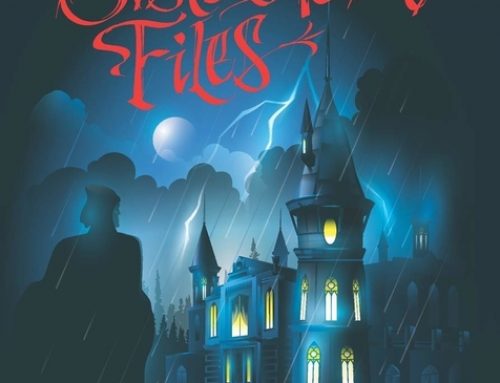
Overall, the reviews have been positive. By Book Three, I’d had enough of zombies and wrote a supernatural horror series. But I never stopped thinking about the universe I’d created the first time around. After publishing the third supernatural novel, I got to work on a story that takes place in the same universe as Tell Me When I’m Dead – but with a new character. Taking this on created some challenges – the most important being that I had to reacquaint myself with what I’d done previously.
I wanted the new series to begin with events that occurred at the end of the zombie trilogy. My main character, Jane, wakes up from an induced coma at Baseborn Identity Research, a sinister government-funded lab. Dave and his friends (from TMWID) are there, conducting a raid. Expanding the universe in this way was exhilarating. And I learned some valuable lessons along the way.
1. Don’t Assume You Know
As a writer, it’s tempting to think you remember everything about your previous books. Sure, you might recall the names, storyline, and plot twists. But I’ll bet there are details in the settings and locales that are relegated to those obscure corners of your brain where old baseball statistics languish.
Being a card-carrying pantser, I began writing Faithless without referring to the old series at all. It wasn’t until I got absolutely stuck that I went back and reread key chapters. Wow, there was so much I’d missed. And what made things worse was that scenes in the new story take place on the same night – and in the same location – as the other one. The lesson? Always go back and reread what you wrote.
2. Changing Genres Leads to Consequences
Unlike the zombie series, Faithless is pure thriller with an eclectic mix of sci-fi and techno. The main character, Jane, has been genetically altered to heal quickly when injured. So if someone shoots her, she recovers. Moreover, the Marines trained her to be deadly. Though she has a strong sense of right and wrong, make no mistake – she’ll kill to protect herself.
The dynamics of the new novel represent a departure from the other series. The biggest difference is in the main character. In TMWID, Dave Pulaski is a regular guy who must learn to fight when he’s thrown into an impossible situation. And his enemies, aside from corrupt officials, are the zombies – soulless carnivores who go after humans like cannibals at a barbeque. Jane is someone who Dave would kill if given a chance. She’s not “normal” and might even be too dangerous to live.

It’s easy for a regular guy to be sympathetic. Make him a recovering alcoholic who teeters on the brink of remission while attempting to protect his wife. But a trained killer? What I did for Jane was take away her memory. She knows weapons, and she knows how to fight. The problem is, she doesn’t know her real name or where she came from. A device as simple as that can be powerful. We care about her because she suffers on a profound level.
The best heroes have one character trait that sets them apart. And they also have an Achilles’ heel. Besides her memory loss, sudden raging fevers plague Jane; over time, they might kill her. Those two things, I think, make her sympathetic, even when she’s forced to take a human life.
4. Research Like a Boss
Earlier, I mentioned that there are sci-fi and techno elements in this story. For me, that meant research. I read once that, when embarking on a new novel, James Michener would first conduct extensive research. Because I’m a pantser, I take a different approach. I research as I go. When I get to a place in the story where details matter, I stop writing and search. My main go-tos are Google and YouTube.
I mentioned YouTube because there’s so much content out there. I particularly enjoy using it to watch how weapons operate. Reading a Wikipedia article is fine. But seeing someone fire a grenade launcher at a tool shed is way more effective when you’re trying to understand the sheer force and resulting damage.
I’m sure there are nonfiction authors out there who would gasp in horror. But hey, I’m writing popular fiction here. Okay fine, pulp. The point isn’t to make things completely accurate. Make them plausible, and you’ll be fine. The old concept of suspension of disbelief goes a long way. (Thanks, Aristotle.)
5. Be Gentle with Your Fans
A final note on changing genres. Most of my fans know me as a horror author. In the last book of my zombie series, I took a left turn and propelled the story on a straight line to the thriller genre. Don’t worry. There are still mutants, but they’ve evolved into highly efficient killers. Oh yeah, and they’re not technically zombies anymore, but medically altered test subjects without a conscience.
I’ll be honest. When I made the switch, I lost some fans. But I gained new ones who genuinely enjoy not only horror but horror thriller. Now I’m asking them to accept me as a thriller author. To sweeten the pot, I’ve made sure there’s still plenty of strange science-gone-wrong elements. And I’ve included high-tech toys that may or may not exist.
What I’m saying is, clue your readers in. Let them know where you’re going. If some leave you, wish them well. Reward the ones who stay and court new readers by making your work the best it can be. Personally, I’m not a fan of pen names. I have enough trouble maintaining one website. I can’t imagine doubling – or tripling – my social media workload. That said, I might adopt a pen name if I switch to writing romance novels. When that day comes, I promise you, I’ll be gentle.
Faithless Book Blurb
In a secret lab, a woman awakens from a bizarre dream. She’s alone, immersed in a tank with wires and tubes. The other test subjects are dead—drowned in black water. Her only memory is dying from her wounds during a night raid in Afghanistan. Something brought her back, uninjured. Men in gray suits try to end Jane. Each time they shoot her, she heals. Leaving a trail of bodies, she runs. Now, she must discover who these men are and why they want her dead. But a debilitating fever rages inside Jane. In the lab, she was on an experimental drug. And without it, she will die.
Publication Date: 5/16/2021
Category: Fiction, Thriller
Retail eBook Price: 4.99 USD
Retail Paperback Price: 18.95 USD
Get an Editorial Review | Get Amazon Sales & Reviews | Get Edited | Get Beta Readers | Enter the SPR Book Awards | Other Marketing Services






















Leave A Comment